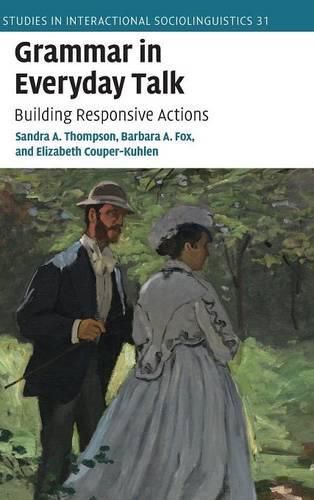Readings Newsletter
Become a Readings Member to make your shopping experience even easier.
Sign in or sign up for free!
You’re not far away from qualifying for FREE standard shipping within Australia
You’ve qualified for FREE standard shipping within Australia
The cart is loading…






Drawing on everyday telephone and video interactions, this book surveys how English speakers use grammar to formulate responses in ordinary conversation. The authors show that speakers build their responses in a variety of ways: the responses can be longer or shorter, repetitive or not, and can be uttered with different intonational ‘melodies’. Focusing on four sequence types: responses to questions (‘What time are we leaving?’ - ‘Seven’), responses to informings (‘The May Company are sure having a big sale’ - ‘Are they?’), responses to assessments (‘Track walking is so boring. Even with headphones’ - ‘It is’), and responses to requests (‘Please don’t tell Adeline’ - ‘Oh no I won’t say anything’), they argue that an interactional approach holds the key to explaining why some types of utterances in English conversation seem to have something ‘missing’ and others seem overly wordy.
$9.00 standard shipping within Australia
FREE standard shipping within Australia for orders over $100.00
Express & International shipping calculated at checkout
Drawing on everyday telephone and video interactions, this book surveys how English speakers use grammar to formulate responses in ordinary conversation. The authors show that speakers build their responses in a variety of ways: the responses can be longer or shorter, repetitive or not, and can be uttered with different intonational ‘melodies’. Focusing on four sequence types: responses to questions (‘What time are we leaving?’ - ‘Seven’), responses to informings (‘The May Company are sure having a big sale’ - ‘Are they?’), responses to assessments (‘Track walking is so boring. Even with headphones’ - ‘It is’), and responses to requests (‘Please don’t tell Adeline’ - ‘Oh no I won’t say anything’), they argue that an interactional approach holds the key to explaining why some types of utterances in English conversation seem to have something ‘missing’ and others seem overly wordy.